Syringe, peristaltic, or pressure microfluidic pumps: which one is the best?
Author
Celeste Chidiac, PhD
Publication Date
Keywords
microfluidic pumps
syringe pump
peristaltic pump
pressure pump
continuous flow
flow rate
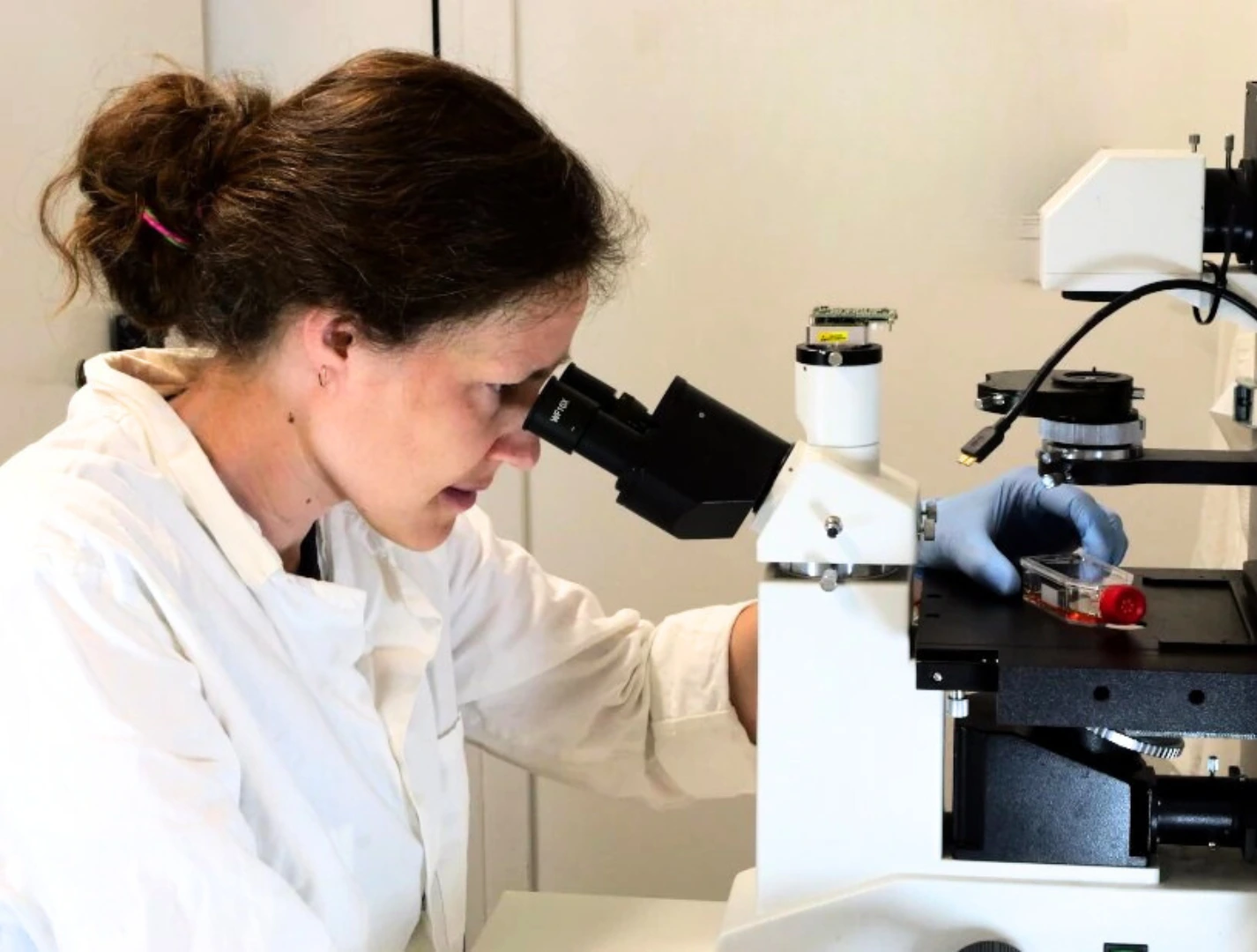
Need advice for your microfluidic pump?
Your microfluidic SME partner for Horizon Europe
We take care of microfluidic engineering, work on valorization and optimize the proposal with you
Introduction
Selecting the right pump is crucial for achieving precise and consistent flow in various applications, from biological research to chemical processing. Syringe, peristaltic, and pressure microfluidic pumps each offer distinct flow characteristics, making them suitable for different experimental needs and conditions. Understanding the strengths and limitations of each can help you make the best choice for your specific application.

Microfluidic pumps system | Flow profile | Flow rate | Flow rate control | Flow continuity |
Syringe pump | Oscillating, pulsatility depends on the pump | Suitable for low flow rates | Precise, controlled by the pump | Disrupted when pull/push transition or when syringe empties |
Peristaltic pump | Pulsatile, can be reduced with a dampener | Not suitable for low flow rates | Moderate, controlled by the pump and tubing selection | Continuous flow, can be disrupted when refilling reservoirs* |
Pressure pump | Highly stable profile; Variety of flows possible: pulsatile, steady, stepwise, custom | Suitable for both low and high flow rates | Very precise; Uses a flow sensor feedback loop | Continuous flow, can be disrupted when refilling reservoirs* |
*Infinite volume looping in a recirculation setup
Syringe microfluidic pumps
Flow profile: Oscillating
Working principle: Syringe pumps push or withdraw fluid through a microfluidic channel using an electric motor and syringe plunger. Programmable pumps allow for custom flow profiles.
Characteristics/Considerations:
- Constant flow rate, even with varying resistance
- Suitable for precise control and low flow rates (µL/min to mL/min)
- Flow is disrupted when the syringe is empty and during push/pull transition.
- Flow rate not monitored in real-time; calibration may be needed
- Applications: Drug delivery studies, microfluidic cell assays, and analytical measurements.

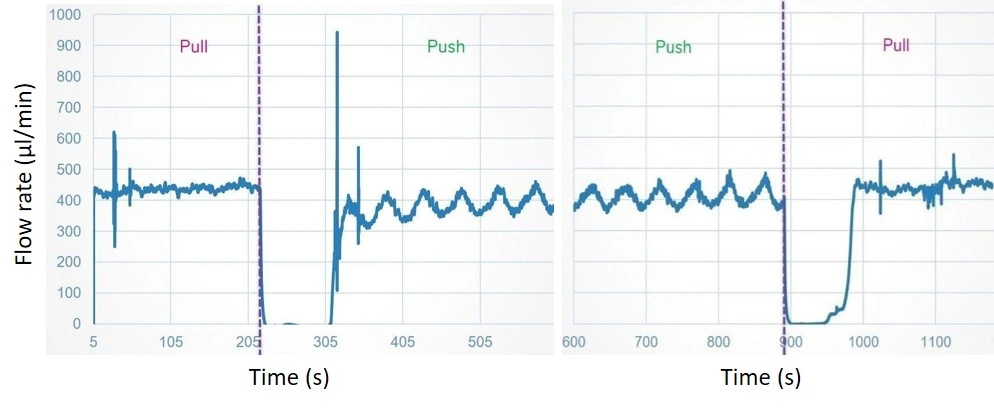
Peristaltic microfluidic pumps
Flow profile: Pulsatile
Working principle: In peristaltic microfluidic pumps, fluid is pushed through flexible tubing by rollers compressing and releasing the tubing.
Characteristics/Considerations:
- Continuous flow
- Moderately pulsatile flow; can be reduced with a dampener
- Suitable for shear-sensitive fluids
- Less precise than syringe pumps and pressure controllers, especially at low flow rates
- Requires calibration for stable flow rate
- Applications: Handling chemicals and long-continuous flow applications, such as cell perfusion.

Pressure microfluidic pumps
Flow profile: Pulsatile, steady, stepwise, customized
Working principle: Pressure pumps control pressure to drive fluid through microfluidic channels, allowing for dynamic flow control.
Characteristics/Considerations:
- High precision and fast response
- Continuous and constant flow with a stable pressure source
- Suitable for both low and high flow rates
- Flow rate influenced by channel resistance or fluid viscosity
- More costly and complex compared to simpler systems
- Applications: Droplet generation, rapid mixing, cell-based assays, and perfusion systems.


The MIC pressure pumps
The MIC has 3 pressure pumps with different characteristics.
Perfusion pump
-
Our perfusion pump is based on a pneumatic piezoelectric micropump with air compression.
-
Incubator-friendly: can be placed inside the CO₂ incubator and is designed to withstand the humidity and temperature for prolonged periods.
-
The user can choose different flow profiles (pulsatile or linear) to mimic physiological conditions.
-
Compact footprint with up to 6 chips to run multiple conditions simultaneously.
-
Integrated pump + flow sensor, reducing tubing and connectors, and making setup simpler and more reproducible.
-
Technical specs: flow rates from 0.1 µL/min to 5 mL/min, with pressure control (0-2000 mbar) and a monitoring/feedback loop.

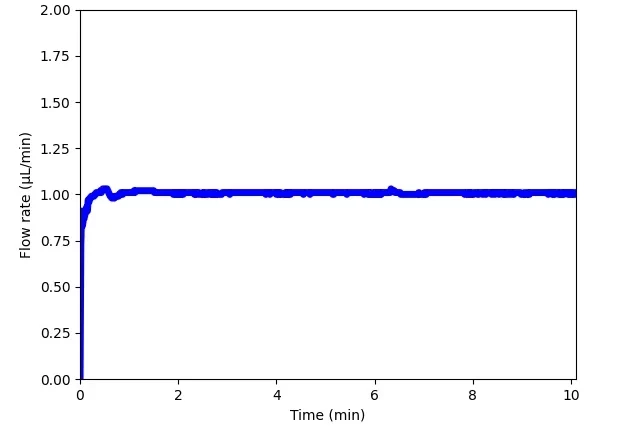
Mini pump
-
Our mini pump uses a pneumatic piezoelectric micropump with liquid compression.
-
Designed to facilitate media recirculation for long-term cell culture in the CO2 incubator (e.g., organ-on-chip, shear-sensitive lines).
-
Compatible with a wide range of reservoir volumes (from small Eppendorf tubes to 1 L bottles) and two main modes: (a) closed-loop using one reservoir, or (b) reservoir-to-waste system using 2 reservoirs (adding level sensors can be switched to recirculation)
-
Technical specs: flow rates down to ~1 µL/min, maximum pressure up to 500 mbar.
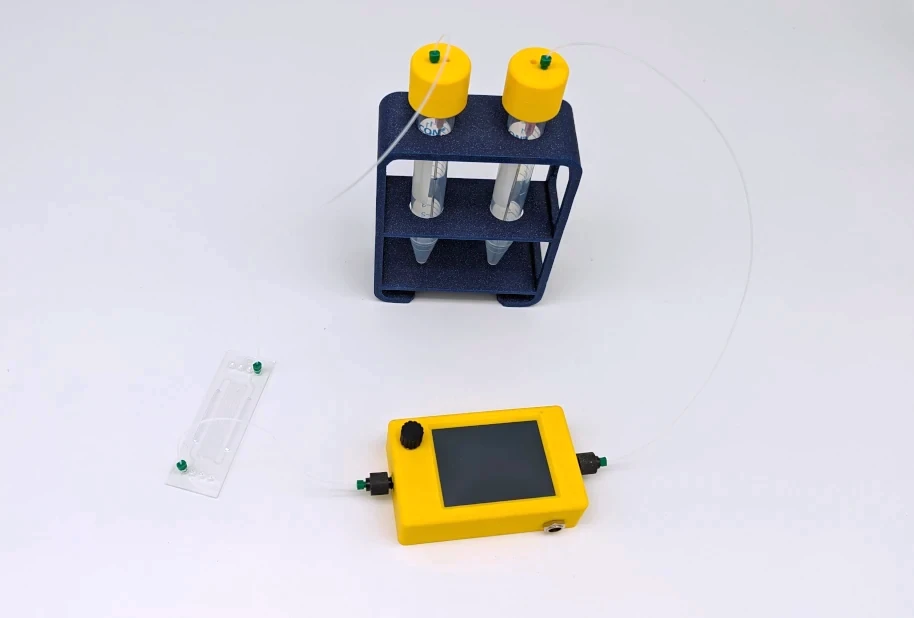
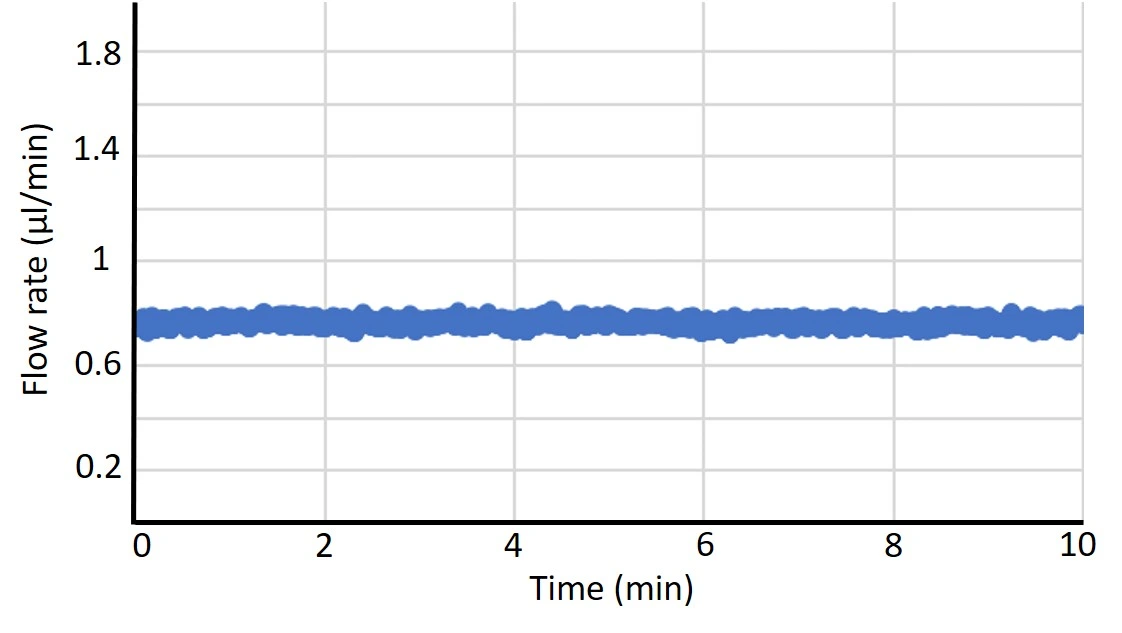
Cell culture pressure pump
-
Our cell culture pressure pump is based on proportional valves.
-
Designed for perfusion of cell cultures outside of a CO₂ incubator, while maintaining a constant pH and gas concentration (e.g., 5% CO₂) in the media reservoir.
-
It allows the user to pressurize the media reservoir with a defined gas mix, so that the gas doesn’t equilibrate with the ambient atmosphere.
-
Multiple channels (1-4) with flow sensors and a feedback loop between pressure and flow rate.

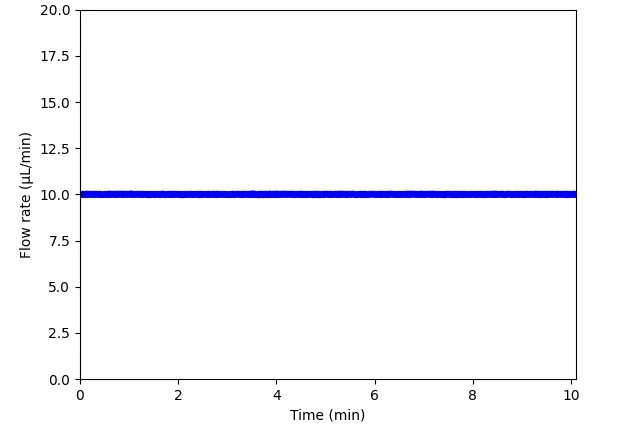
Want to know more on this subject? Check the extended review comparing the different microfluidic pump flow profiles and characteristics.
Conclusion
Each type of microfluidic pumps – syringe, peristaltic, and pressure – offers unique advantages depending on the application. Syringe pumps offer precise control at low flow rates but can experience disruptions during transitions. Peristaltic pumps are ideal for continuous flow and sensitive fluids but lack precision and cannot handle very low flow rates. Pressure pumps provide flexible, fast response for dynamic control but are more complex and costly. Carefully evaluating the requirements of your experiment will help determine the most suitable pump for achieving optimal results.
This “quick tips” was written by Celeste Chidiac, PhD.
Published in January 2025.
Contact: Partnership[at]microfluidic.fr





